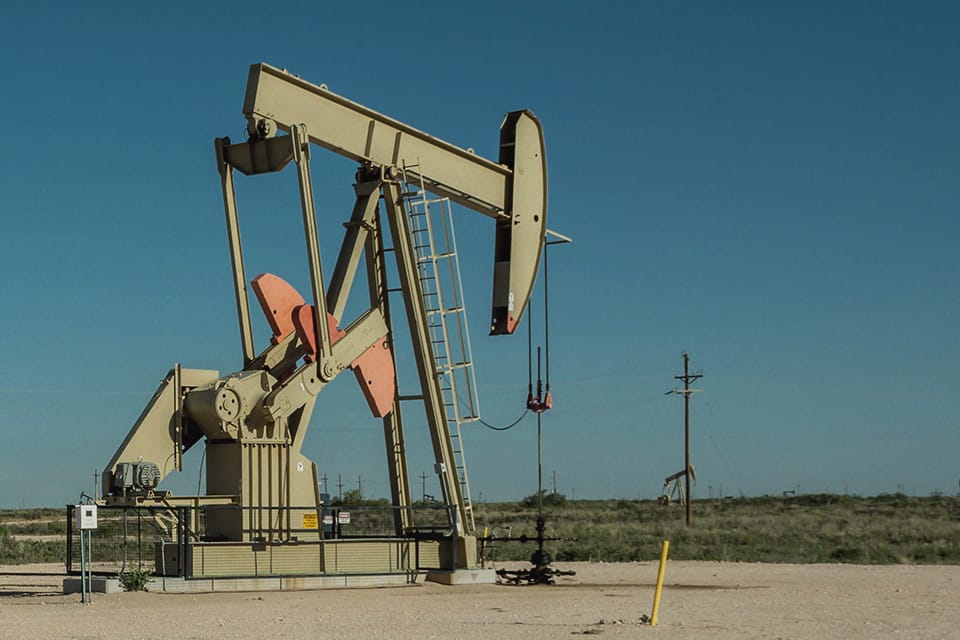
2025 Energy Sector Wrap-Up: How the Year Unfolded for North America’s Oil and Gas Industry

From decarbonization to digital transformation, 2025 was another pivotal year for energy.
At Veriforce, we’ve been watching closely as the oil and gas industry continued to evolve amid shifting market forces, new technologies, and ongoing workforce challenges. Earlier this year, we shared our predictions for what would shape the industry. Now, as 2025 draws to a close, we’re taking a look back to see what really happened, and what it means for the road ahead.
Energy Transition and Emissions Reduction
What We Predicted
We expected companies to shift their focus from large renewable projects to technologies that directly reduce emissions, like carbon capture, utilization, and storage (CCUS).
What We Saw
- CCUS moved forward, but more slowly than expected. Several major projects in Canada and the U.S. reached new milestones, but many ran into familiar hurdles like permitting delays, high costs, and infrastructure limitations.
- In September, the Environmental Protection Agency (EPA) introduced a rule that would eliminate requirements for the majority of U.S. industries, including fossil fuel producers and refiners. This demonstrates the de-prioritization of ESG.
- Renewables stayed in the mix. While companies pulled back on large solar and wind investments due to policy changes, many continued using renewables to power field operations and offset emissions locally.
Takeaway: The focus on lowering emissions has shifted. For many companies, sustainability goals are no longer deeply connected to operational safety, compliance, and long-term resilience.
Digital Transformation and Innovation
What We Predicted
We expected the next big leap in artificial intelligence, automation, and predictive analytics to reshape operations and improve safety.
What We Saw
- Progress, not perfection. Companies made steady gains with digital systems and predictive maintenance tools, especially for pipelines and refinery operations. But full integration across systems proved challenging.
- Predictive safety became real. More organizations began using predictive analytics to identify leading indicators of risk. Veriforce’s technology helped clients analyze workforce and safety data to prevent SIFs before they happen.
- Automation picked up speed. Drones, robotics, and autonomous vehicles are now common for inspections in hazardous zones, reducing human exposure and improving efficiency.
- Cybersecurity rose to the top. With more data and automation came a greater focus on protecting operational systems from cyber threats.
Takeaway: The digital shift is paying off, but success depends on getting the human side right. This includes training, culture, and leadership alignment.
Workforce and Safety
What We Predicted
We expected a growing need to upskill workers for the digital future, along with wider use of wearable safety technology.
What We Saw
- The workforce gap widened. Many experienced workers retired this year, and companies struggled to fill skilled roles. Recruiting and training became critical priorities.
- Training got more creative. Virtual reality simulations and microlearning platforms gained popularity because they meet workers where they are and make learning more engaging.
- Wearable safety tools went mainstream. Large operators expanded the use of sensors that monitor fatigue, exposure, and worker movement.
- Remote operations grew. Real-time monitoring, drone inspections, and remote field support helped reduce safety risks and improve efficiency.
Takeaway: The oil and gas industry is discovering that investing in people is just as important as investing in equipment. Upskilling, engagement, and a strong safety culture remain the foundation for operational excellence.
Market Dynamics and Geopolitics
What We Predicted
With a new administration in the U.S., we anticipated continued price volatility, policy shifts, and an ongoing push for energy independence in both the U.S. and Canada.
What We Saw
Production and Exports
- North America hit record highs for oil and natural gas output in 2025. U.S. shale production surged, and Canadian oil sands projects maintained strong performance.
- LNG exports expanded again. New terminals came online along the U.S. Gulf Coast, and Canada advanced its own LNG infrastructure.
Oil Prices Under Pressure
- Oil prices came under pressure in 2025 as U.S. inventories rose and global demand slowed. WTI crude dipped below $60 per barrel a couple of times, most recently in the fourth quarter, as a result of the Gaza peace deal.
- Global demand grew only modestly, about 700,000 barrels per day, far slower than the 2024 surge.
- High interest rates and economic uncertainty contributed to weaker consumption.
- Despite lower prices, U.S. shale production stayed strong, thanks to more efficient drilling and high-quality reserves. Still, profitability pressures slowed new drilling and reduced rig counts.
Geopolitical Tensions Fuel Volatility
Energy markets were anything but calm. A mix of tariffs, trade disputes, and regional instability kept prices swinging:
- U.S.–China trade tensions resurfaced through targeted energy tariffs.
- European carbon border adjustments created new complexities for global trade.
- Instability in Iran, Venezuela, Russia, and parts of Africa added a geopolitical risk premium to every barrel.
- Through it all, U.S. shale acted as a stabilizer; flexible but no longer the growth engine it once was. High interest rates and rising service costs forced many producers to focus on efficiency instead of expansion.
Natural Gas and LNG
Global natural gas demand cooled in 2025 after a strong rebound the year before.
LNG expansion in North America continued, however, as new export terminals came online and infrastructure projects advanced, especially along the U.S. Gulf Coast.
Takeaway: 2025 reminded everyone that the oil and gas industry is as much about geopolitics as it is geology. With prices low and volatility high, efficiency, innovation, and strategic collaboration became more important than ever.
Opportunities Ahead for 2026
The lessons of 2025 will guide the industry’s next chapter. As companies look ahead, several priorities stand out:
- Keep advancing safety innovation. Predictive analytics, wearable devices, and real-time monitoring are reducing risk, but only when paired with a strong safety culture.
- Invest in people. The next generation of workers needs modern, engaging training to stay motivated and capable in an increasingly digital industry.
- Build data-driven operations. Reliable data fuels better decision-making, from maintenance to compliance.
- Strengthen supply chain resilience. Ongoing global uncertainty reinforces the need for visibility and flexibility in sourcing and logistics.
- Stay ahead of regulations. With environmental and safety standards evolving quickly, proactive compliance is essential to avoid costly disruptions.
In a Constantly Changing Industry, the Right Safety Partner Makes All the Difference
The oil and gas industry in 2025 reminded us that progress is rarely linear. The drive toward cleaner, smarter, and safer operations continued, even as market realities shifted.
For Veriforce, this year reaffirmed our role as a trusted partner to the companies that keep North America’s energy supply running. By combining technology, training, and compliance expertise, we help organizations strengthen their safety culture and prepare for whatever comes next.
Ready to learn how Veriforce can help your organization build a safer, more compliant, and future-ready workforce?




